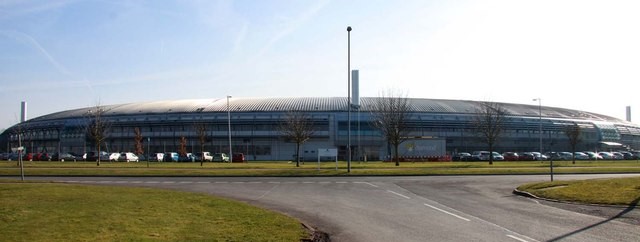
July 24, 2017, by Dr. Meghan Gray
Student Research: Summer internship at Diamond Light Source
 A guest post from 3rd-year undergraduate Chloe Gowling, who won a prestigious paid summer internship at the Diamond Light Source at the Harwell Science and Innovation Campus in Oxfordshire. (For a glimpse into the inner workings of this vast facility, see Prof Moriarty’s video tour “Anatomy of a Physics Experiment” on Sixty Symbols.)
A guest post from 3rd-year undergraduate Chloe Gowling, who won a prestigious paid summer internship at the Diamond Light Source at the Harwell Science and Innovation Campus in Oxfordshire. (For a glimpse into the inner workings of this vast facility, see Prof Moriarty’s video tour “Anatomy of a Physics Experiment” on Sixty Symbols.)
This is the second post in a continuing series focusing on how our students are spending their 2017 summer break. Previously:
Shaun Brown: Crystal Clear Clusters
Summer internship at Diamond Light Source
This summer I am on a 12-week placement at Diamond Light Source, the UK’s national synchrotron facility. Electrons are accelerated close to the speed of light in a huge ring-shaped particle accelerator to produce high intensity light known as synchrotron radiation. At Diamond, this radiation is produced in the infrared, ultraviolet and X-ray regions of the electromagnetic spectrum. Applications range from imaging the structure of viruses to understanding the formation of the solar system.
I am working in the data analysis department, where we process the data from X-ray imaging, tomography, which allows us to see inside objects on a molecular scale. The raw datasets collected can be of the order of terabytes, in size. As you can imagine this can take an age to process! To combat this Diamond developed a piece of software called Savu, which processes tomography data at very high speeds. Not only is Savu fast it can also process data in many ways. Different processing packages are called plugins. Currently writing a plugin is difficult and requires and understanding of Savu’s source code.

Diamond Light Source: the UK’s National Synchrotron Facility (credit: Steve Daniels)
This is where I come in: my aim is to create a graphical user interface (GUI) that allows scientists to easily create their own, experiment specific, plugins. So far, I have created a GUI that generates a simple plugin. I am now faced with the challenging task of expanding this to produce plugins with more complex processing capabilities.
It’s not all work on the project: there are many opportunities available alongside the placement. Diamond is on Harwell campus which has many science facilities, in a wide range of disciplines. Just the other day I went on a tour of ISIS, a neutron and muon source. I also volunteered at Bluedot science and music festival at Jodrell bank telescope in Cheshire. This involved telling people about the work that goes on at Diamond, going to lectures on emerging science and seeing live music.
I am now a third of a way through and I still can’t quite believe I’m here! I have learnt so much already and it’s great working on something that will hopefully be useful to people. I am really enjoying seeing how the physics I have learnt on my course is applied.

View of the Lovell Telescope at Jodrell Bank Observatory during the bluedot science and music festival.

Looks to have been an amazing experience, big sacrifice to forego on those summer holidays and head off to the world of experimentation.
Could of course have spent a few months down a mine in North Yorkshire looking at the darker side of Physics.
🙂